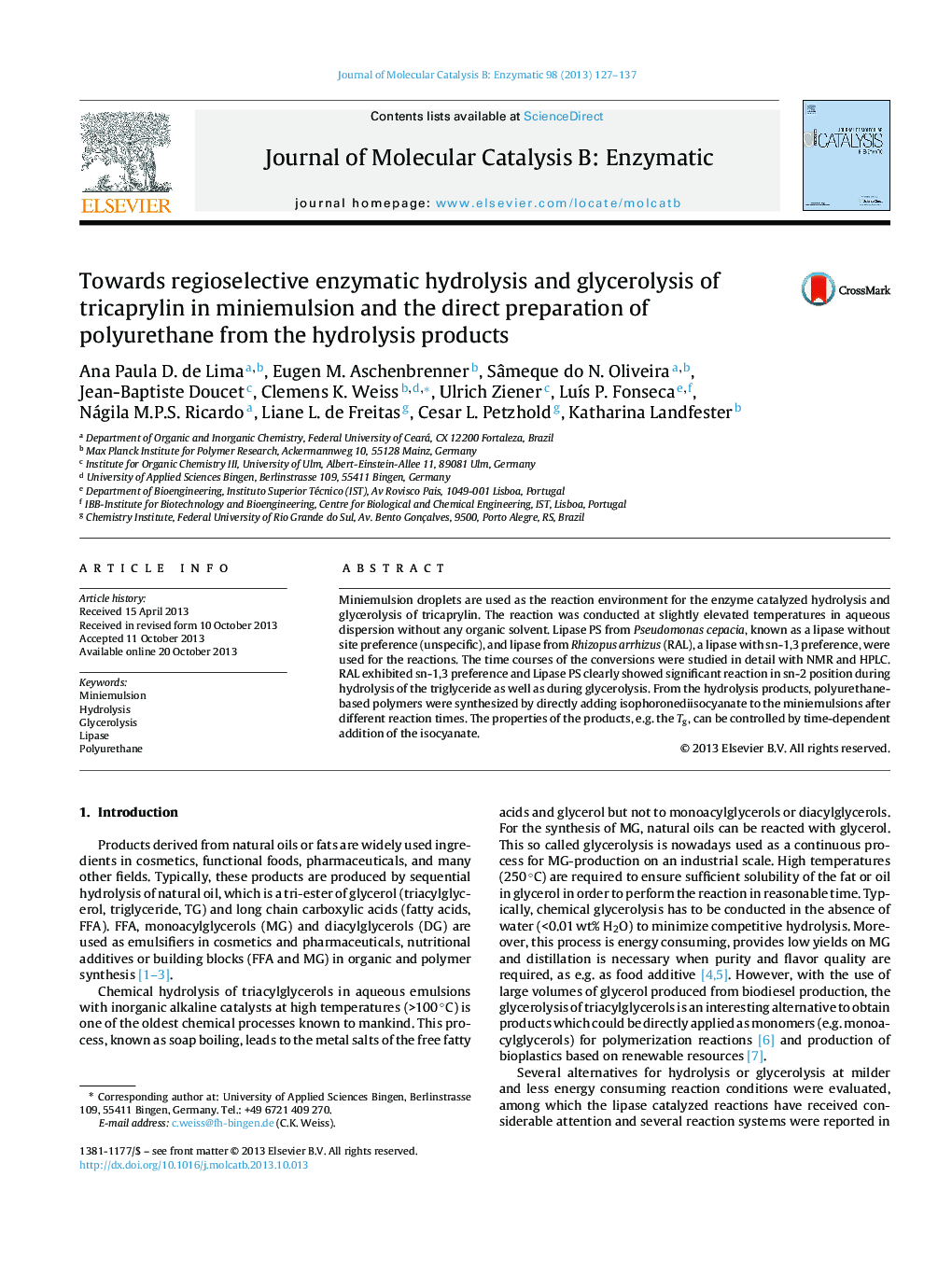| Article ID | Journal | Published Year | Pages | File Type |
|---|---|---|---|---|
| 69820 | Journal of Molecular Catalysis B: Enzymatic | 2013 | 11 Pages |
•Efficient lipase catalyzed hydrolysis and glycerolysis of tricaprylin in miniemulsion.•Conversion to mono and diglycerides is monitored by HPLC and NMR.•Lipase PS exhibits preference for reaction in sn-2 position.•Polyurethane can be prepared from the hydrolysis products without workup.
Miniemulsion droplets are used as the reaction environment for the enzyme catalyzed hydrolysis and glycerolysis of tricaprylin. The reaction was conducted at slightly elevated temperatures in aqueous dispersion without any organic solvent. Lipase PS from Pseudomonas cepacia, known as a lipase without site preference (unspecific), and lipase from Rhizopus arrhizus (RAL), a lipase with sn-1,3 preference, were used for the reactions. The time courses of the conversions were studied in detail with NMR and HPLC. RAL exhibited sn-1,3 preference and Lipase PS clearly showed significant reaction in sn-2 position during hydrolysis of the triglyceride as well as during glycerolysis. From the hydrolysis products, polyurethane-based polymers were synthesized by directly adding isophoronediisocyanate to the miniemulsions after different reaction times. The properties of the products, e.g. the Tg, can be controlled by time-dependent addition of the isocyanate.
Graphical abstractThe lipase catalyzed hydrolysis of tricaprylin in miniemulsion is monitored with NMR and HPLC. The product composition is determined by the choice of the enzyme and the reaction time. Polyurethane is directly prepared from the hydrolysis products.Figure optionsDownload full-size imageDownload as PowerPoint slide
